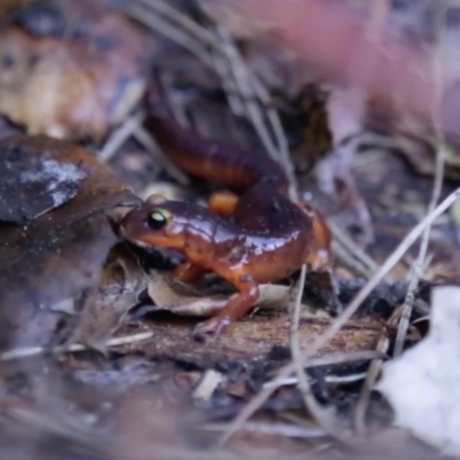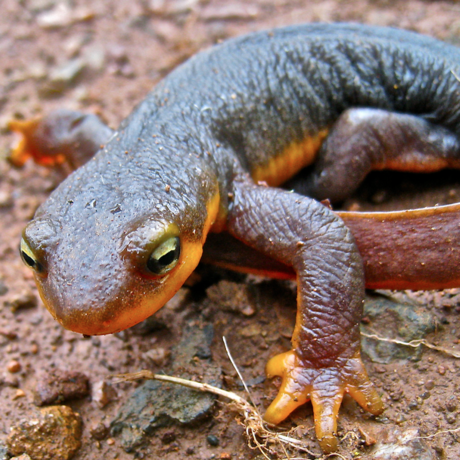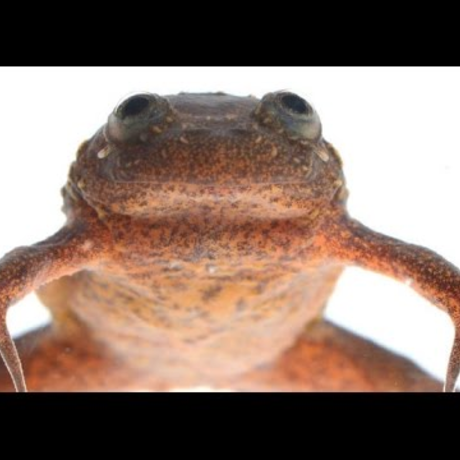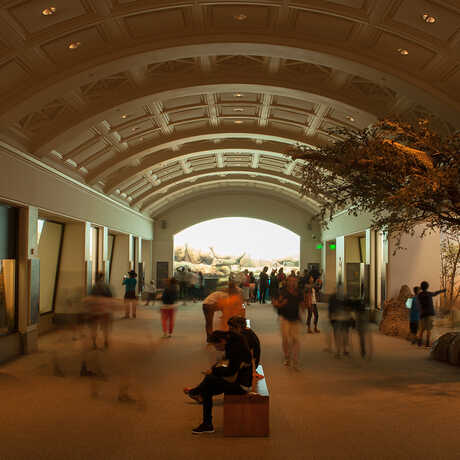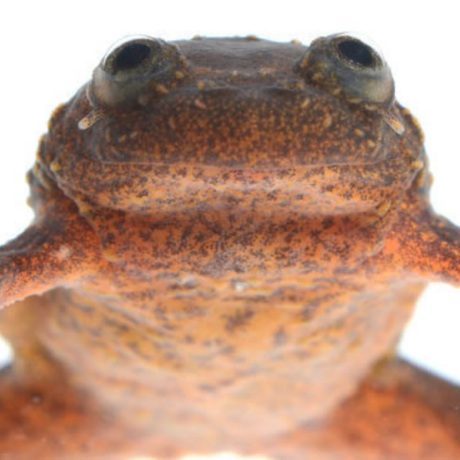The Academy's Herpetology collection of amphibians and reptiles is one of the 10 largest in the world, containing more than 309,000 cataloged specimens from 175 countries. Learn more about the department's staff, research, and expeditions.
Our Work
Q&A with David Blackburn

Three questions with Dr. David Blackburn, former Academy Research Associate and Associate Curator of Herpetology in the Florida Museum of Natural History at the University of Florida.
How do you use museum collections in your work?
Museum collections are extremely important as a record of what existed at various times and places around the world. In a way, each jar is like a time capsule. I recently described a new species based on a specimen that was collected 80 to 90 years ago in a little-studied mountain range in southern Tanzania. In discussing with colleagues working in the area, it now seems that frog species may be extinct. Just think, without collections from decades ago, we would not even know of its existence.
How did you become interested in frogs?
I've been interested in history and time for many years, but after hearing a talk about amphibians in college, I was hooked on frogs from that point forward. Among amphibians, frogs are the most diverse group of animals, accounting for about 90 percent of the amphibian class!
One of the things I find most fascinating is that frogs have changed very little over time. If you could go back to the age of the dinosaurs, the frogs you'd find alongside Triceratops would look very similar to the ones you find today. Likewise, when I'm in Africa doing fieldwork, I can't help but think about our human ancestors listening to nearly the same frog calls I hear echoing through the night air.
How do you prioritize which research questions to tackle first?
The big picture questions of my research have remained relatively stable through time: Are there interesting patterns in how amphibians have evolved? What is the history of the frog species found in Africa? But, the nitty-gritty of these big picture questions changes almost weekly.
One week, for instance, we'll be working based on evidence that a particular location is only home to a certain species of frog. Then lab work will reveal that there are actually two species, and the questions we thought we were asking last week will quickly morph into a new set. We test ideas, but sometimes those tests are quick, and then they lead immediately to a new question, and a new answer, and then another new question. As is probably true for most scientists, I tend not to tackle one thing first, but instead 10 things simultaneously!
